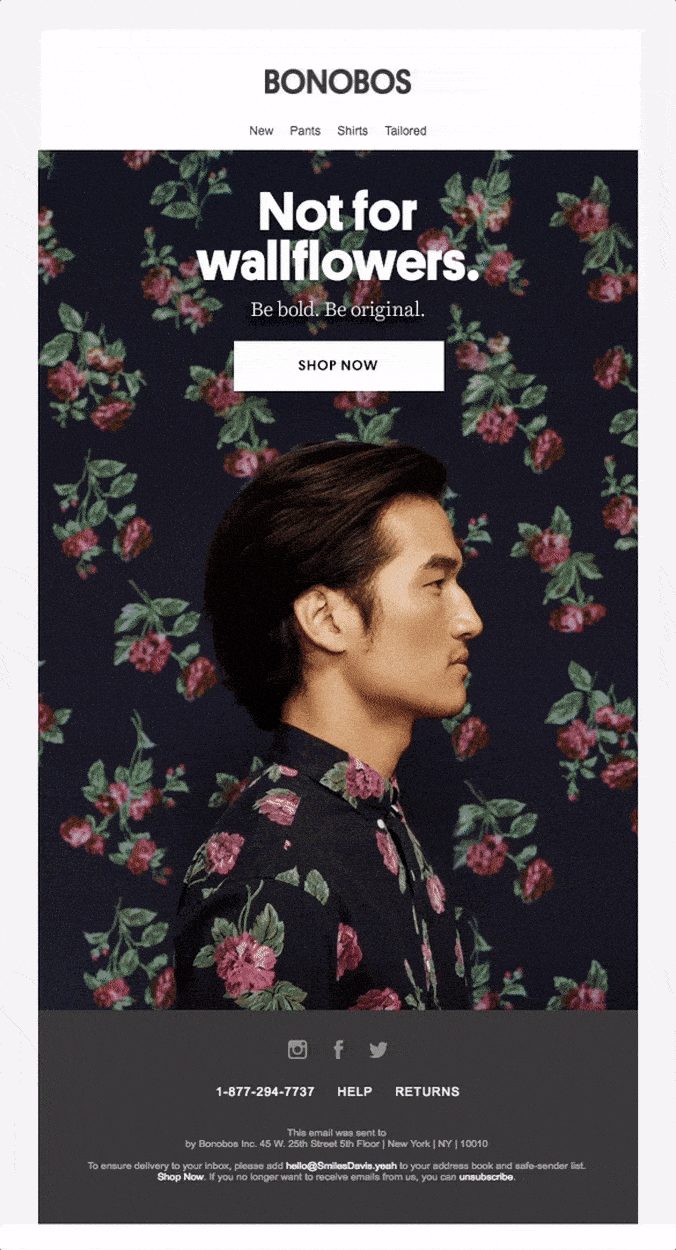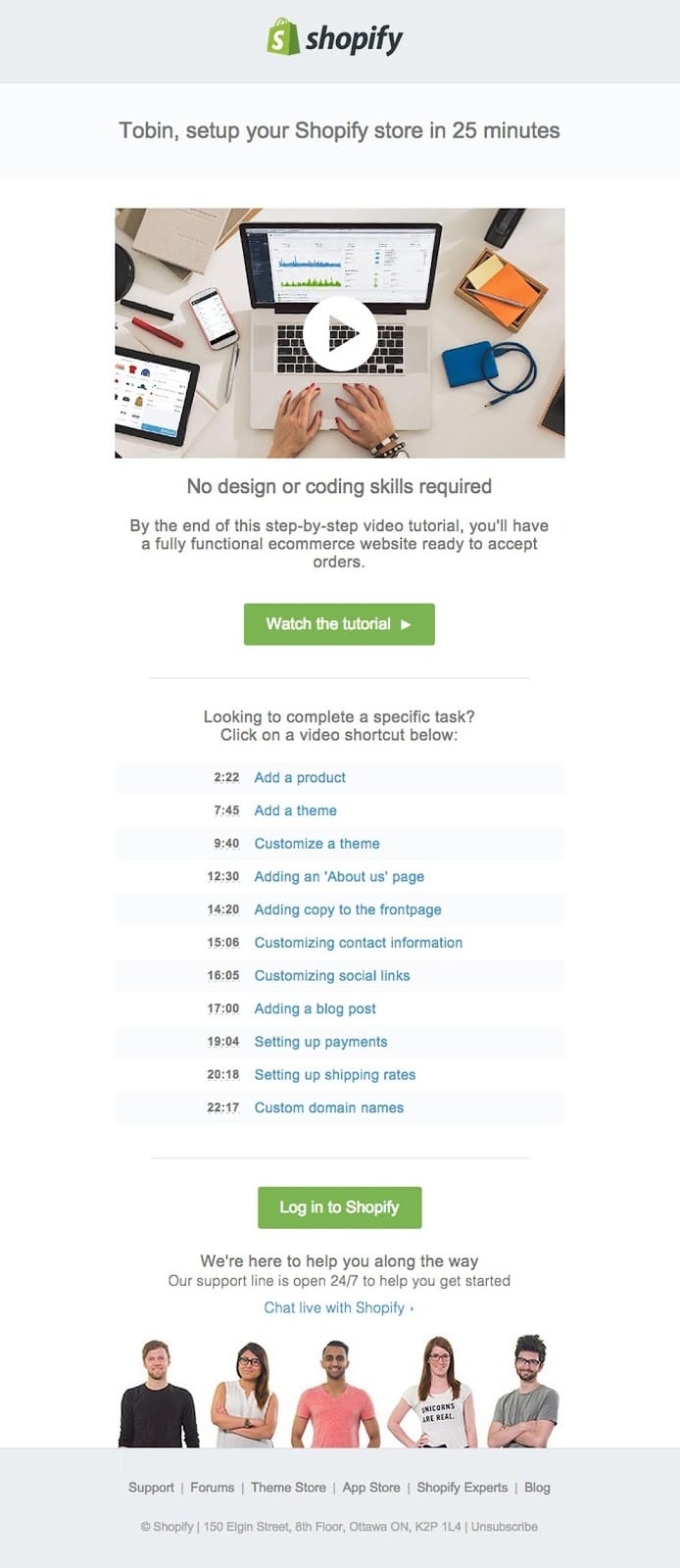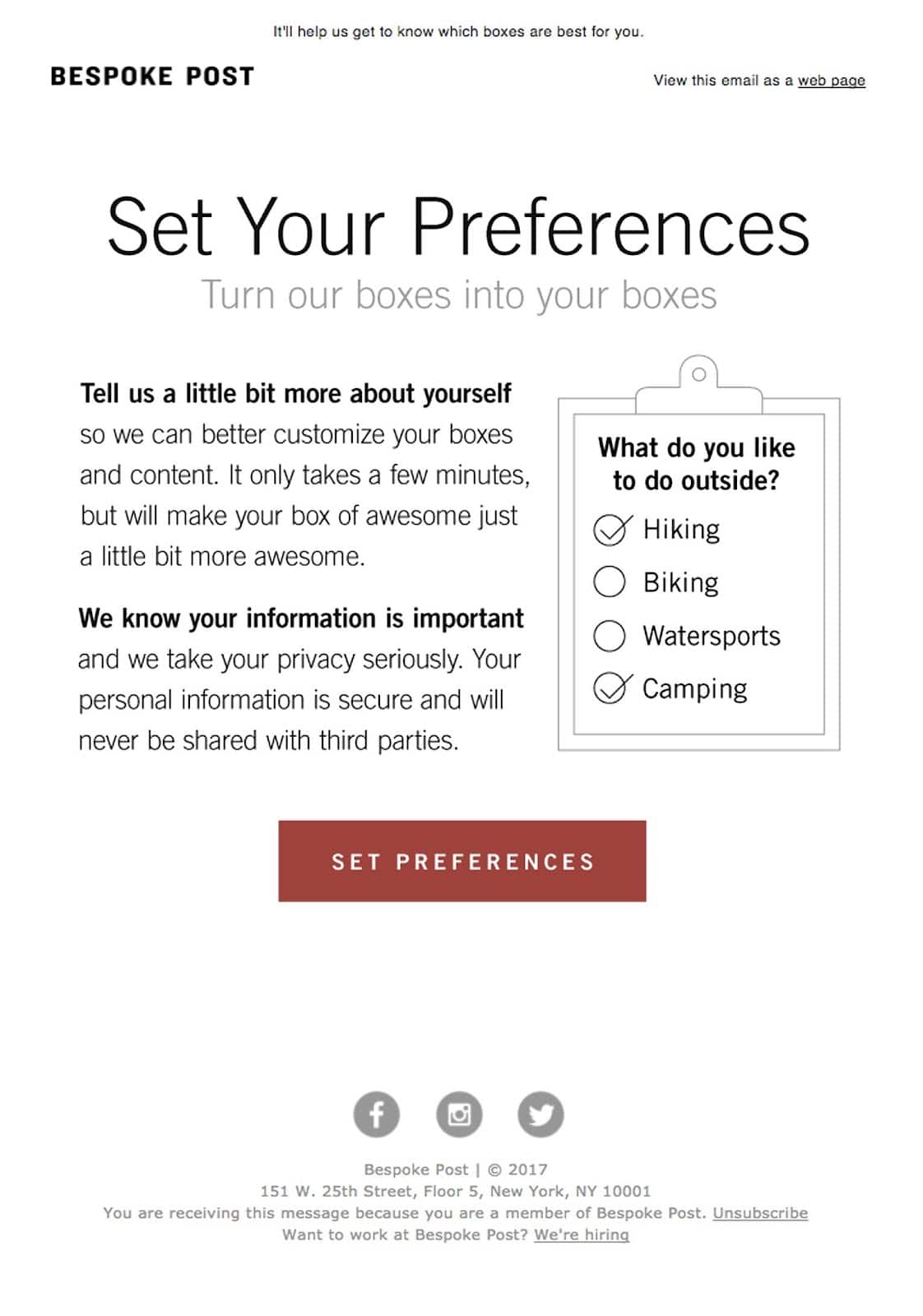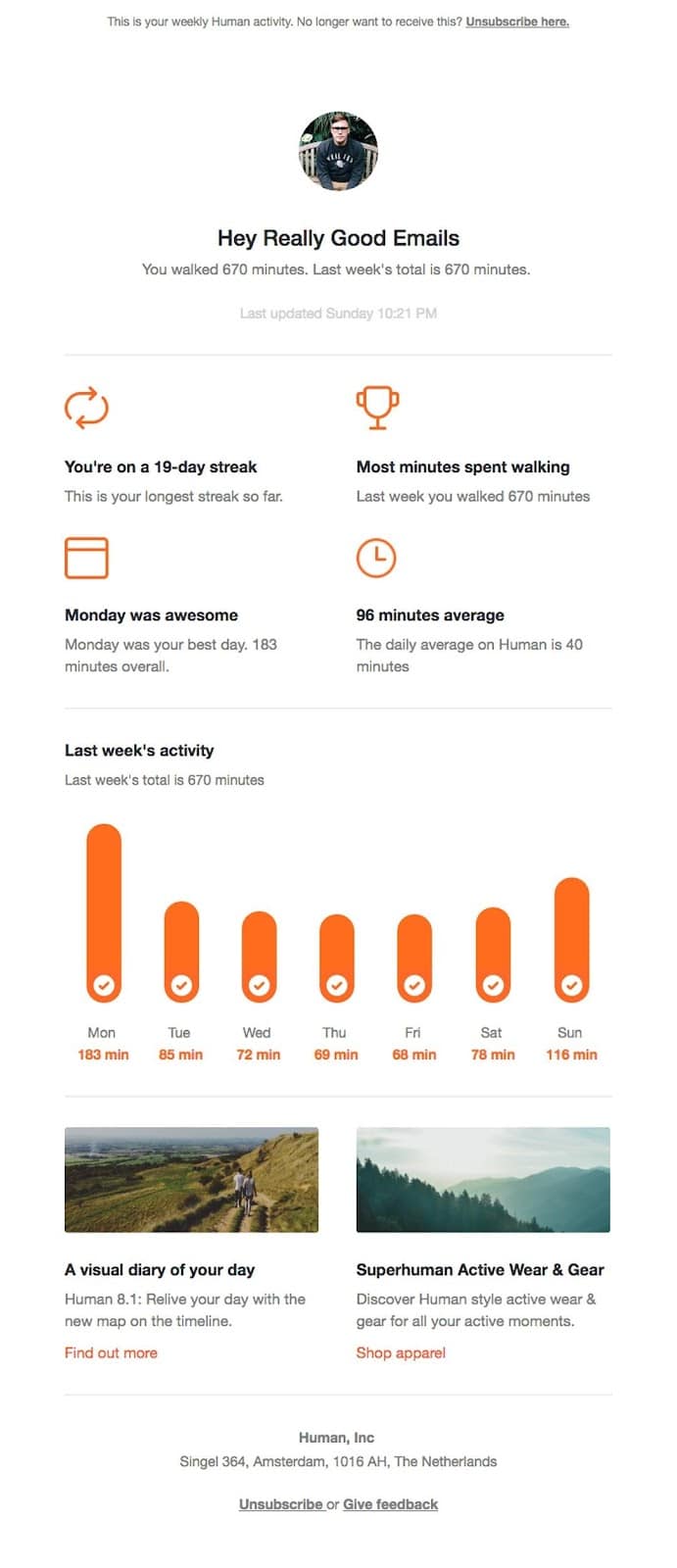Strategy: Get better results by adding multimedia to your email
As an email marketer, you should always be looking for ways to grab the attention of your readers as quickly as possible. Multimedia in email marketing is a great way to do this.
What exactly are the advantages of using various forms of media in your emails?
Even a brand new digital marketer should already know the answer to this. How often do you see a text-only campaign these days? By its strictest definition, almost all marketing content online is multimedia-based.
A combination of text and images (and more) is now the usual recipe for a marketing email. Variety provides more interest to hook your subscribers—a desirable outcome, for sure. But it’s important to be choosy about your media. More media doesn’t equal a better email.
How can multimedia emails improve your digital marketing strategy?
Before we get into the different types of media, let’s unpack how creating multimedia emails helps enhance your digital marketing.
Is multimedia really a game-changer? The short answer: Yes. If you’re not convinced, here are a few ways it works to increase the effectiveness of your campaigns:
-
More tools to work with means improved layouts and aesthetics. Fancy graphics and bold fonts aren’t enough to create good content. Purposeful design motivates subscribers to act, which puts them on the path to conversion. Finesse and intention are just as important as information.
-
A well-designed email is scannable. Did you know that 80% of people don’t read your entire email? They scan your content for something interesting and will often ignore everything else. Good multimedia helps drive home important details. Work with the assumption that most subscribers aren’t going to read all your text.
-
Using multimedia provides more avenues to explore personalization and the adoption of real-time technology. For email marketers, personalization is effective in increasing engagement. Did you know that pairing personalization with real-time email marketing can generate up to $20 more for every $1 spent on campaigns using the combined strategy?
You may be wary of using multimedia because of email client and device support issues. It’s a valid concern, but one that will matter less and less with time. Email marketing will continue to evolve, emerging technology will provide better platform features, and better updates will roll out.
Right now though, access to relevant customer data and the right tools can help ease your worries.
For example: If most of your subscribers view emails on their smartphones, you should format content for mobile devices.
Does your email campaign rely on embedded videos? Advanced functionalities like Liveclicker’s LiveVideo can be a lifesaver. It uses moment-of-open technology to ensure that fallback content—like a static image—gets displayed if video playback isn’t supported.
What are the types of multimedia you can add to emails?
What’s the measured impact of using an image, animation, video, or other media format? Are they equal in terms of what they add?
Let’s talk about all the elements at your disposal when creating a multimedia email.
1. Static images
The human brain learns to interpret visual cues before it learns to string words together. In what may be a related statistic, research shows that more than 65% of people get a better grasp of information when it’s presented visually. For some, image processing is faster than reading blocks of text.
But we wouldn’t recommend you take this and start crafting only image-heavy emails from now on. This technique, if used with reckless abandon, can make your content look like spam and even slow down the loading time of your email. You want your emails to be compelling and attractive.
Source: Really Good Emails
Did you know the average click-through rate across all industries is under 2.7%?
Use that number as a benchmark (or attempt to go beyond it) by making your emails more engaging. One of the easiest ways to do this is to add images to your emails—chances are, images are included in your email marketing best practices already.
2. Animated images
According to GIPHY—a GIF database and search engine—people view a collective 2 million hours of GIFs daily. This number’s not surprising, as GIFs are practically everywhere online, from news websites to direct messaging apps.
More than 70% of email marketers have seen increased transaction-to-click rates when using GIFs. In fact, Dell executed a GIF-centric email campaign in 2014, which led to a 109% increase in revenue for the company. This was an early example of multimedia email strategy success.
You can use a GIF to animate illustrations or do a slideshow-like presentation of images. It’s sometimes used as a lightweight replacement for video. More often than not, including a GIF in your multimedia email marketing strategy is a relatively hassle-free way to add creative visual appeal.
Source: Really Good Emails
Before you spread the gospel of the GIF, some words of warning: These animations can get large. The more complicated a GIF is, the larger its file size. Consider optimizing animated GIFs you use before sending out your emails.
3. Videos
Did you know a simple addition of the word “video” in your email subject line may boost your open rate by 19% (even if you don’t include one in your email body)? Just the promise of video can change your email’s metrics.
Now you’re probably wondering how it affects metrics when it’s part of your content. The media format doesn’t disappoint: When marketers add videos, research shows they can lead to an almost 50% increase in revenue growth, and click-through rates can improve by up to 65%.
Source: Really Good Emails
Don’t want to chance video embedding? Here’s a low-risk alternative: A static image with play a centered button—it mimics the look of a video. This image can be hyperlinked to a video hosted elsewhere, like Vimeo or YouTube.
4. Interactive content
With interactive content, you’re presenting an opportunity for subscribers to spend time engaging intentionally with your brand. It may seem like a big ask, but compared to passive content, interactive content generates twice as many conversions.
Any email element that supports a back-and-forth between you and your audience counts. It can be as simple a fun pop quiz or as elaborate as a kinetic email. The latter takes the idea of interactivity further by controlling email template design elements through HTML and CSS.
More than 44% of email marketers use interactive content—and more than 65% of marketers who include interactive elements to their campaigns report increased audience engagement.
Source: Really Good Emails
Another winning email marketing tip: Use an interactive experience to collect information from subscribers. Relevant customer data can then help refine segmentation and inform personalization.
4. Dynamic content
Like kinetic design, using dynamic content involves changing template-level HTML within your multimedia email. But kinetic design provides animation and interactive elements without delving into known customer data.
Dynamic design typically uses previously-collected subscriber data to personalize subject lines and other parts of your emails. You may think of the widespread inclusion of personalization in email marketing as the major result of the propagation of dynamic content.
Using dynamic content in multimedia emails can improve your click-to-open rates by more than 70%. When you personalize emails using dynamic content, you may see up to 18 times more revenue.
Source: Really Good Emails
If you choose to include dynamic content, you’ll likely enjoy a boost in metrics across the board. A personalized email marketing strategy can generate an ROI of about 122%. Similar to interactive content, personalized calls-to-actions lead to about twice as many conversions compared to default counterparts.
Wrap up
More and more digital marketers are incorporating multimedia into their email marketing. In fact, it’s not a stretch to say almost all marketing emails are multimedia emails. When was the last time you sent a text-only message to your email list?
Multimedia email has a stronger impact, which means the result is in an engagement boost (and increases across other metrics). These are the multimedia that matter:
-
Still images, which include JPGs and PNGs
-
Animated images, typically in GIF form
-
Videos, usually an MP4 when embedded
-
Interactive content
-
Dynamic content
It’s worth noting that putting all these formats together won’t make for an effective email. At the end of the day, an eye for design and a focus on fostering real connections with your subscribers are the most important factors in email marketing.
Need more help creative effective marketing emails? Check out Emma’s preflight checklist for email campaigns.
MOST RECENT ARTICLES
Want to engage your audience and grow your brand? Try Emma's robust easy-to-use product today.


















